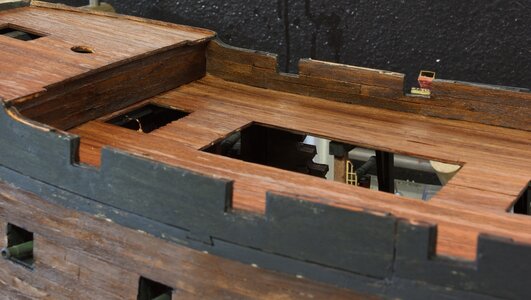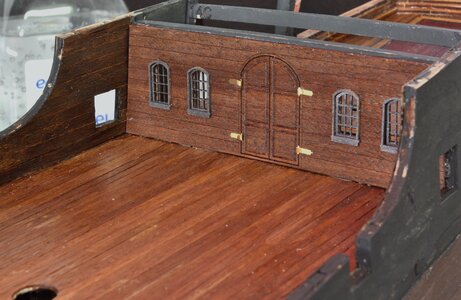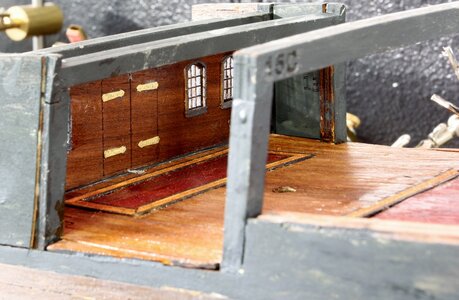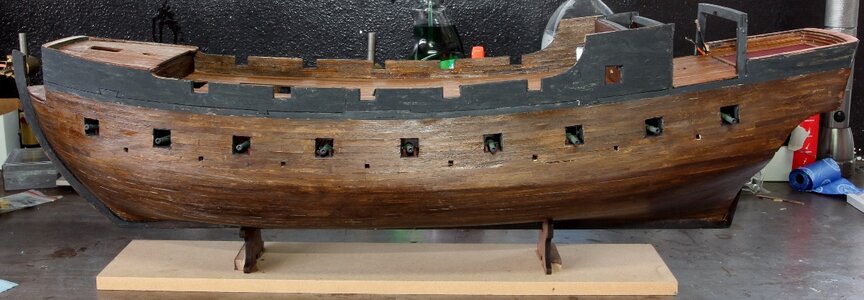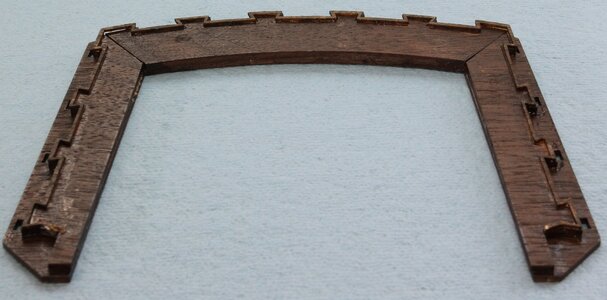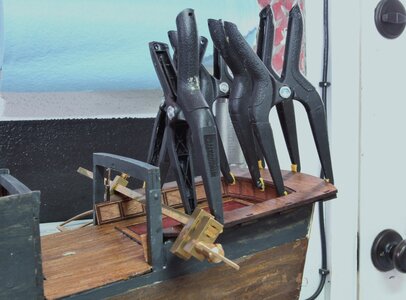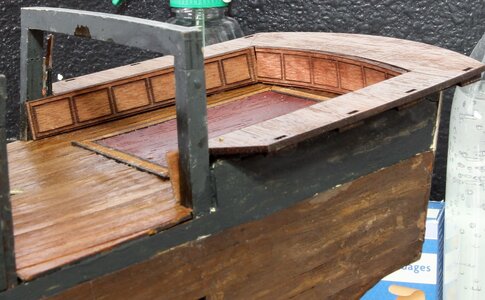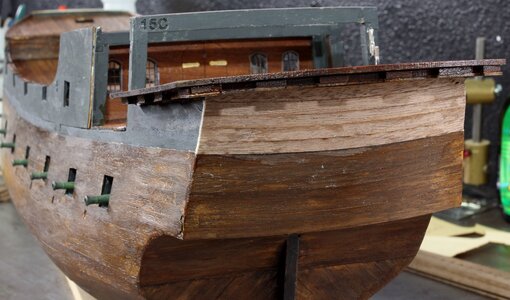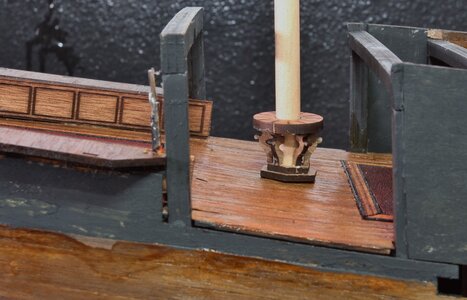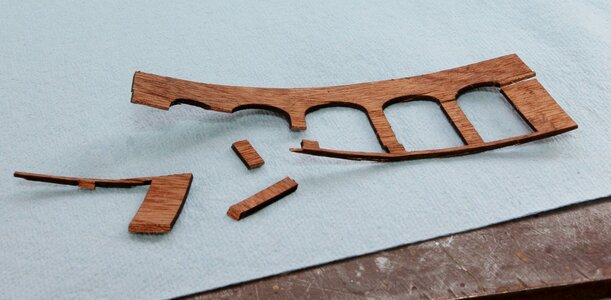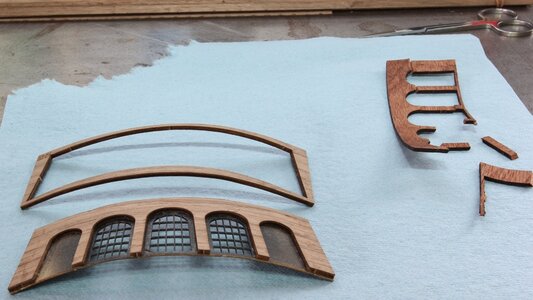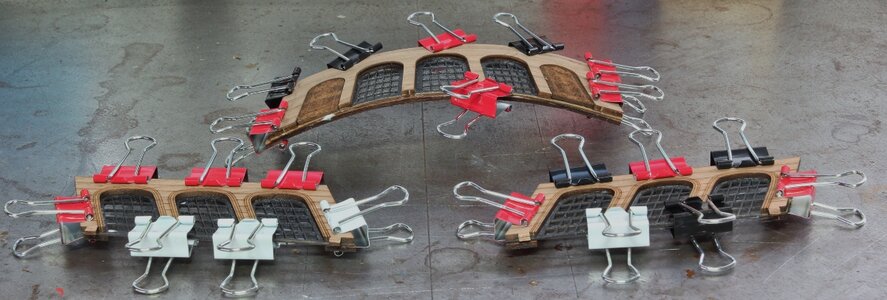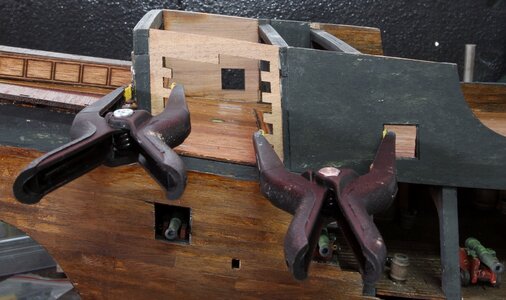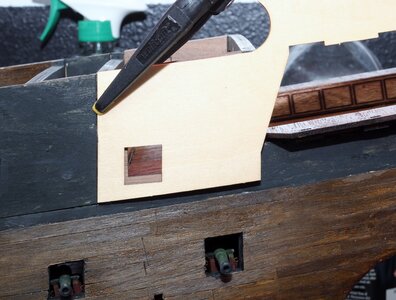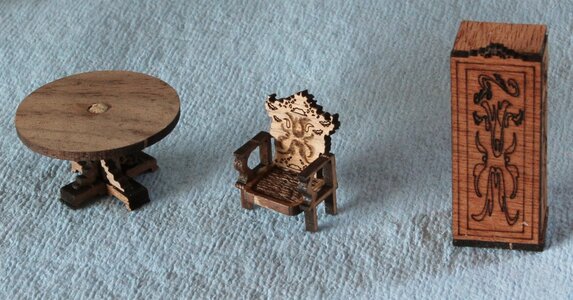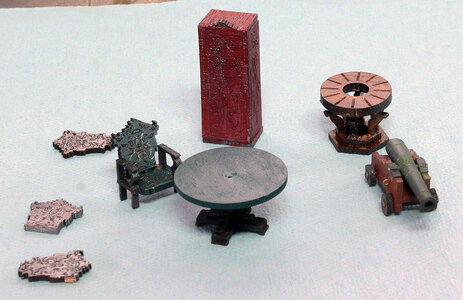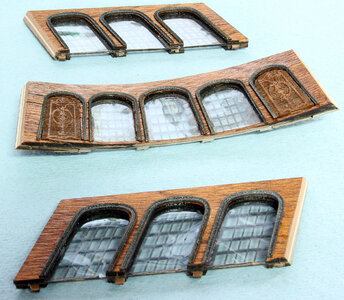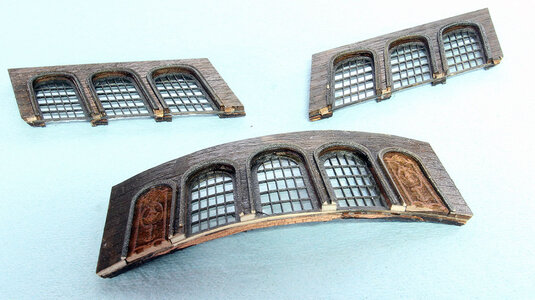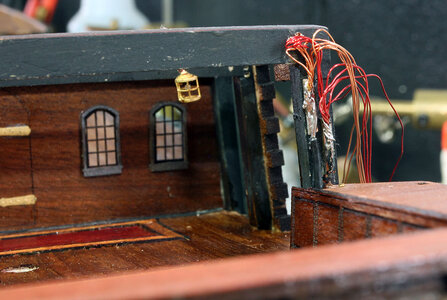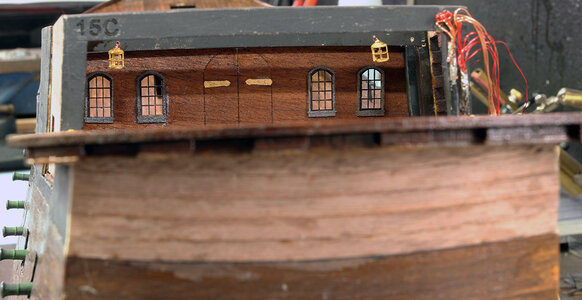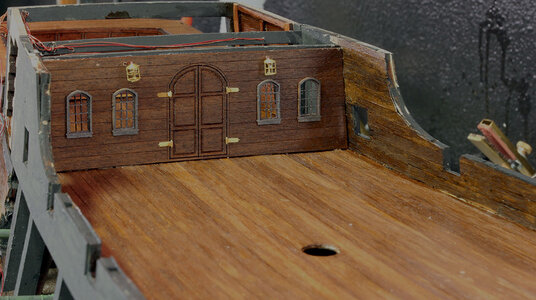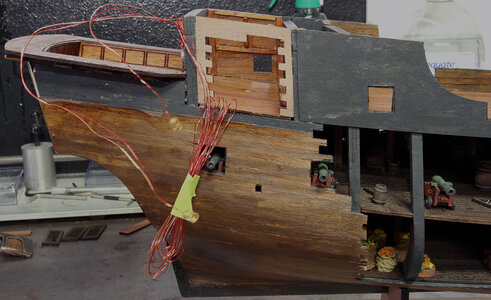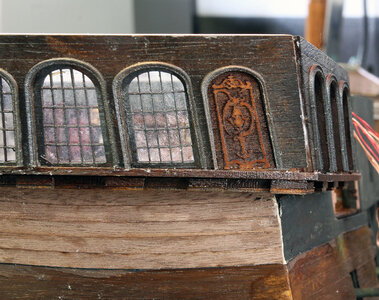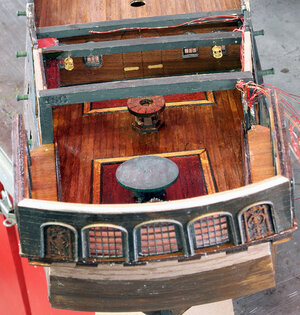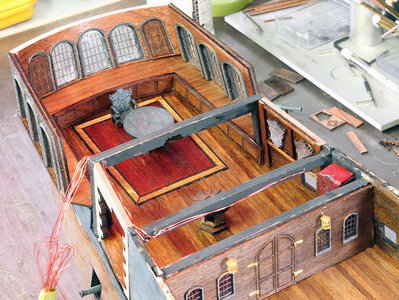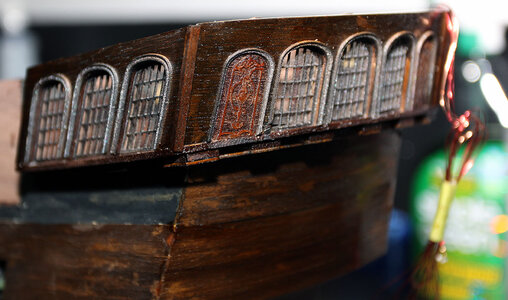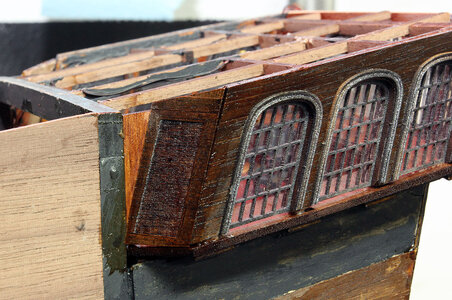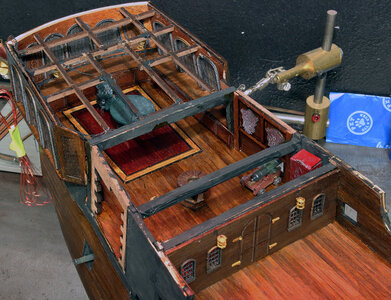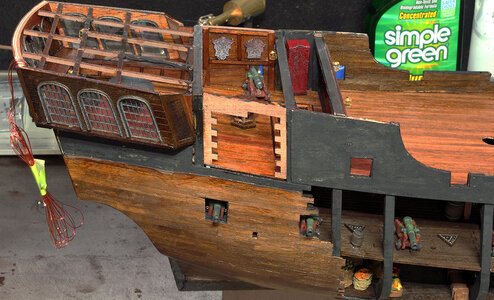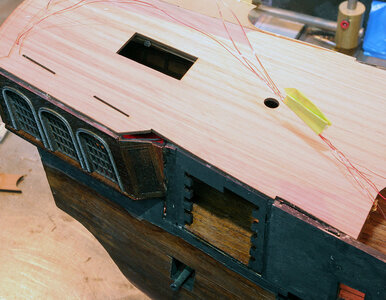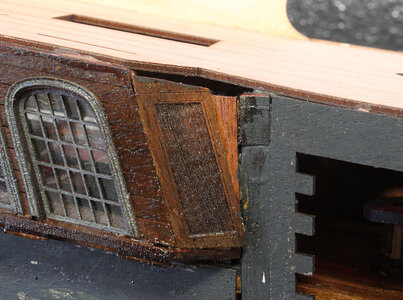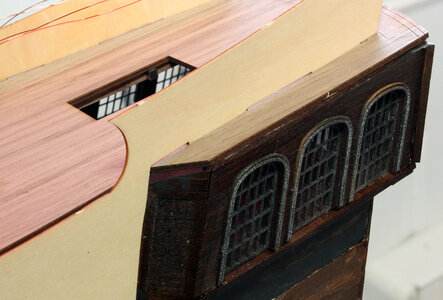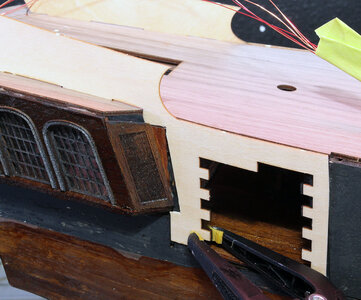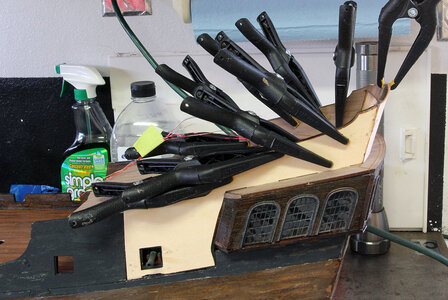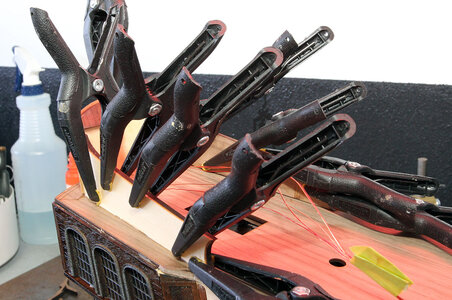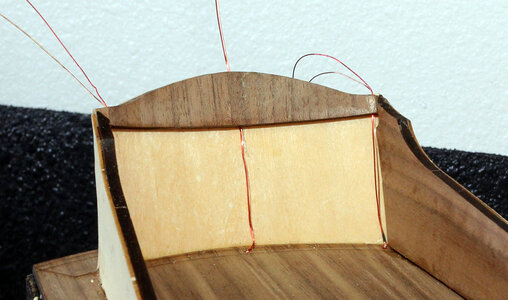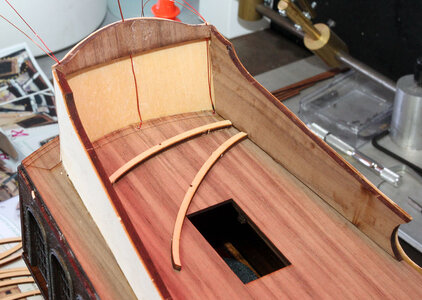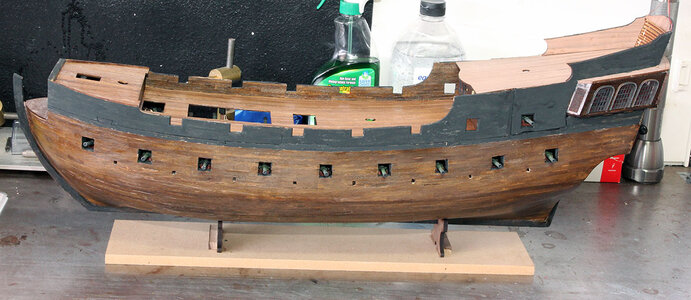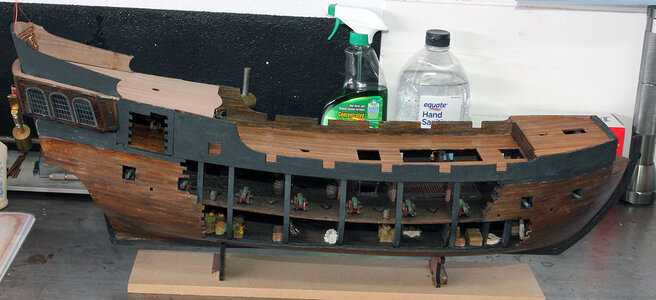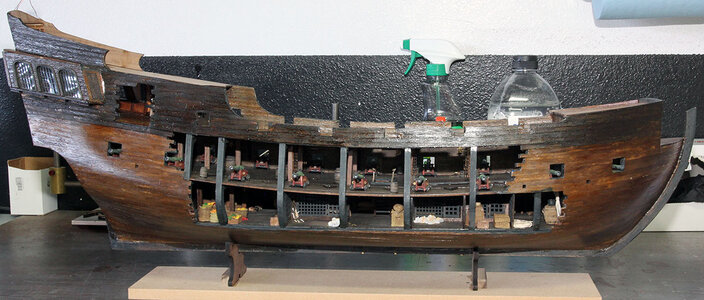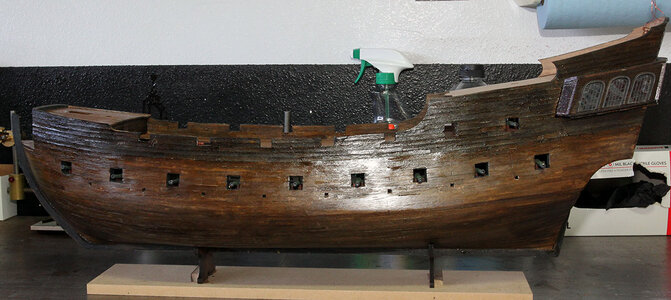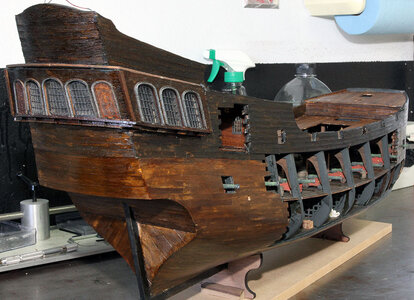I then painted the gun ports on the main deck black and went to work planking the main deck. This is another place where there is some pretty confusing instructions. I’m going to skip the long explanation and just say the planking on the deck is intended to be done with the .5x3.8x500mm strips. I added some insert in the captains cabin just to make it look fancy. There’s a crazy optical illusion going on with the bloodwood insert on the rear of the captain’s cabin. It is narrower in the front but only by 1 mm. It looks square when you can’t see the sides and then looks like a really drastic taper when you can see the sides.
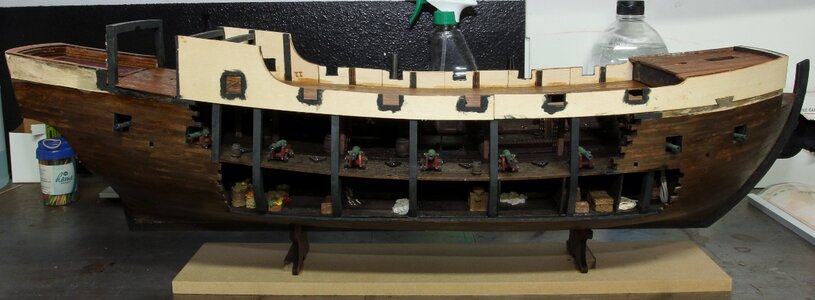
Here you can see the insets better. I painted over everything with amber shellac to add an older feel. I like the contrast with the sides so It won’t be monotone, but it has a similar feel to it.
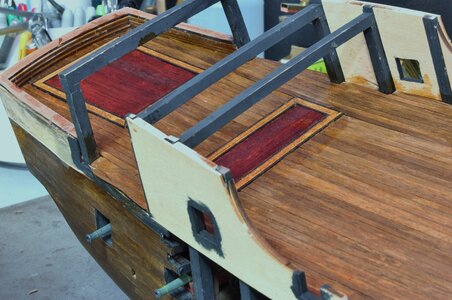
In the photo below on each side of the upper foredeck there is a piece of walnut on the inside of the plywood. These are actually pieces of the included 2mm X 5mm X 500mm strips that have been cut down bent and sanded to match the plywood. This is another place I was a little confused at what ZHL wanted me to do, but it finally made sense after looking at the table in the front of the manual for item number 29.
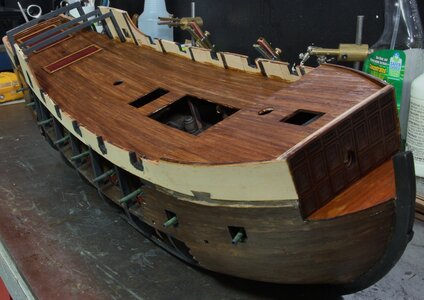
Here’s a close up of the insets in the captain’s cabin. The bloodwood and the strips around it are just some samples I bought from a company that sells veneer. They had a sample back for about $35 that had a little roughly 4X9 inch rectangle of about 60 different types of wood veneers. The bloodwood seemed perfect for the pearl to me. You can really see the optical illusion I was talking about in this photo.
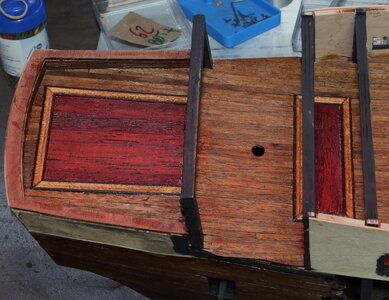
Here’s an overall view from the top front. Next up is planking the inside of the bulwarks and doing the wall on the front of the captain’s cabin.
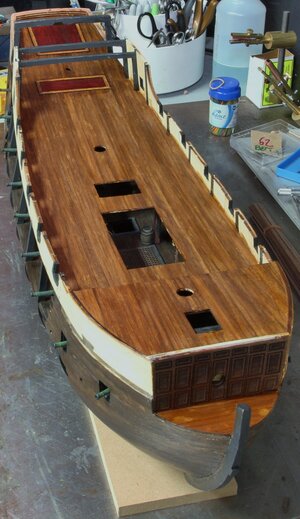

Here you can see the insets better. I painted over everything with amber shellac to add an older feel. I like the contrast with the sides so It won’t be monotone, but it has a similar feel to it.

In the photo below on each side of the upper foredeck there is a piece of walnut on the inside of the plywood. These are actually pieces of the included 2mm X 5mm X 500mm strips that have been cut down bent and sanded to match the plywood. This is another place I was a little confused at what ZHL wanted me to do, but it finally made sense after looking at the table in the front of the manual for item number 29.

Here’s a close up of the insets in the captain’s cabin. The bloodwood and the strips around it are just some samples I bought from a company that sells veneer. They had a sample back for about $35 that had a little roughly 4X9 inch rectangle of about 60 different types of wood veneers. The bloodwood seemed perfect for the pearl to me. You can really see the optical illusion I was talking about in this photo.

Here’s an overall view from the top front. Next up is planking the inside of the bulwarks and doing the wall on the front of the captain’s cabin.






